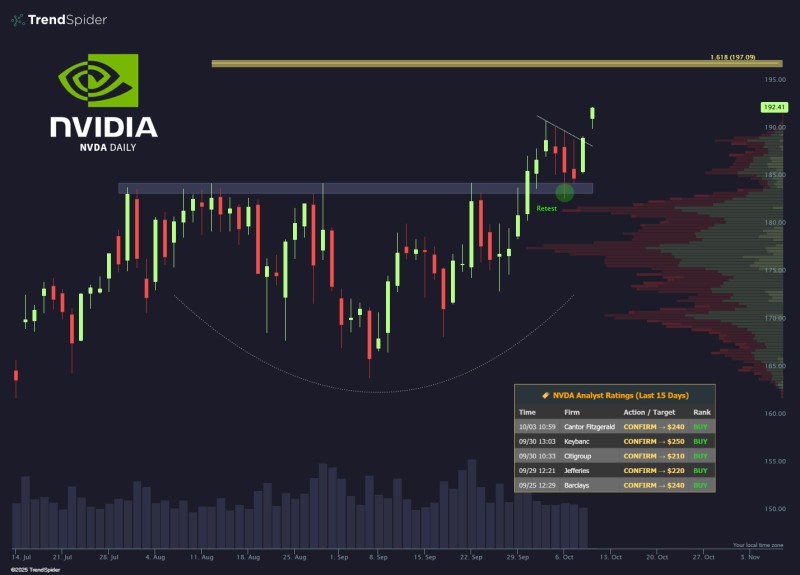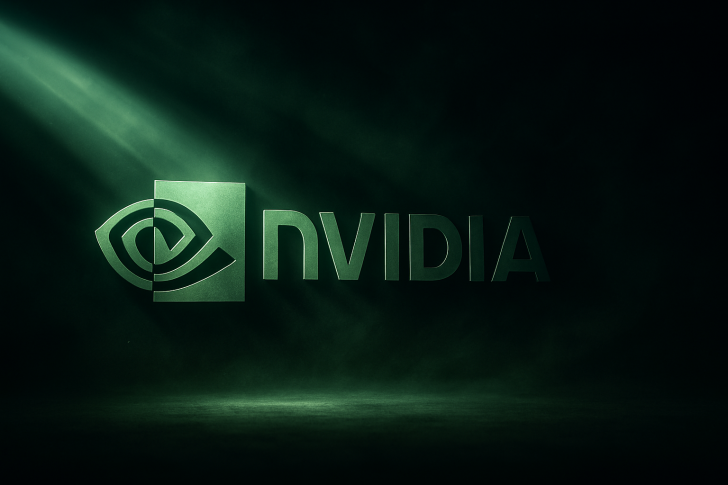NVIDIA (NVDA) has delivered a technical setup that's catching attention across trading desks. After weeks of sideways movement, the stock pushed through resistance, pulled back to test that level as support, and bounced decisively higher. Combined with fresh bullish commentary from major Wall Street firms, the setup suggests more upside could be ahead.
Technical Picture Shows Classic Progression
The daily chart from TrendSpider reveals textbook price action. NVDA broke cleanly above the $185 resistance zone, came back to retest it as support, and quickly rebounded toward $192. Strong buying volume accompanied the bounce, signaling conviction from market participants.

A rounding bottom formation that developed from August through late September adds another layer to the bullish narrative. Volume profile analysis indicates heavy accumulation between $180 and $185, providing a solid base for the current rally. Short-term traders are eyeing the $197 Fibonacci extension as the next inflection point.
Wall Street Backing the Move
Recent weeks have brought a wave of bullish analyst updates on NVIDIA:
- Cantor Fitzgerald: $240
- Keybanc: $250
- Citigroup: $210
- Jefferies: $220
- Barclays: $240
These targets average around $232, roughly 20% above recent trading levels. The consistency across multiple firms reinforces the bullish sentiment rather than representing isolated optimism.
AI Leadership Drives Confidence
NVIDIA's position in AI computing and data center GPUs keeps institutional money flowing in. As AI infrastructure buildout accelerates across industries, the company sits at the center of this technological shift. Accumulation patterns visible in volume data suggest smart money continues adding positions rather than distributing shares.
What's Next for NVDA
Holding above the $185–$190 zone keeps the technical structure intact. From there, the stock has a clear path toward $197 in the near term, with potential extension toward the $220–$250 analyst target zone. The successful retest provides confidence for bulls looking at longer holding periods.
 Saad Ullah
Saad Ullah

 Saad Ullah
Saad Ullah


